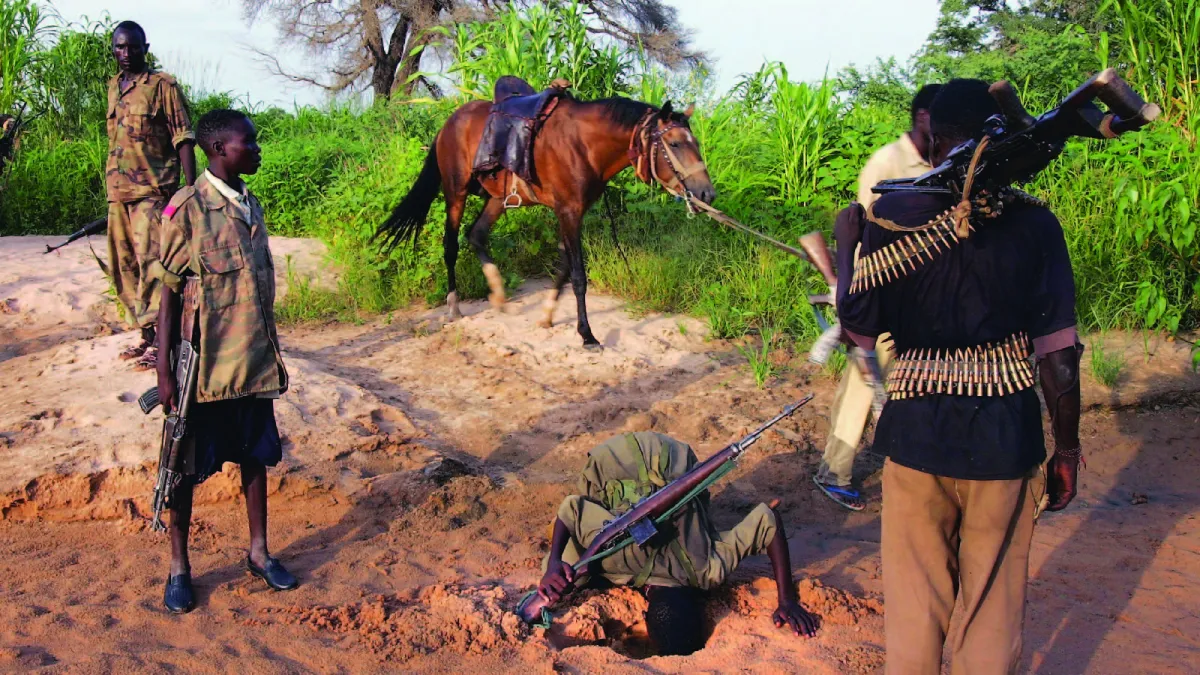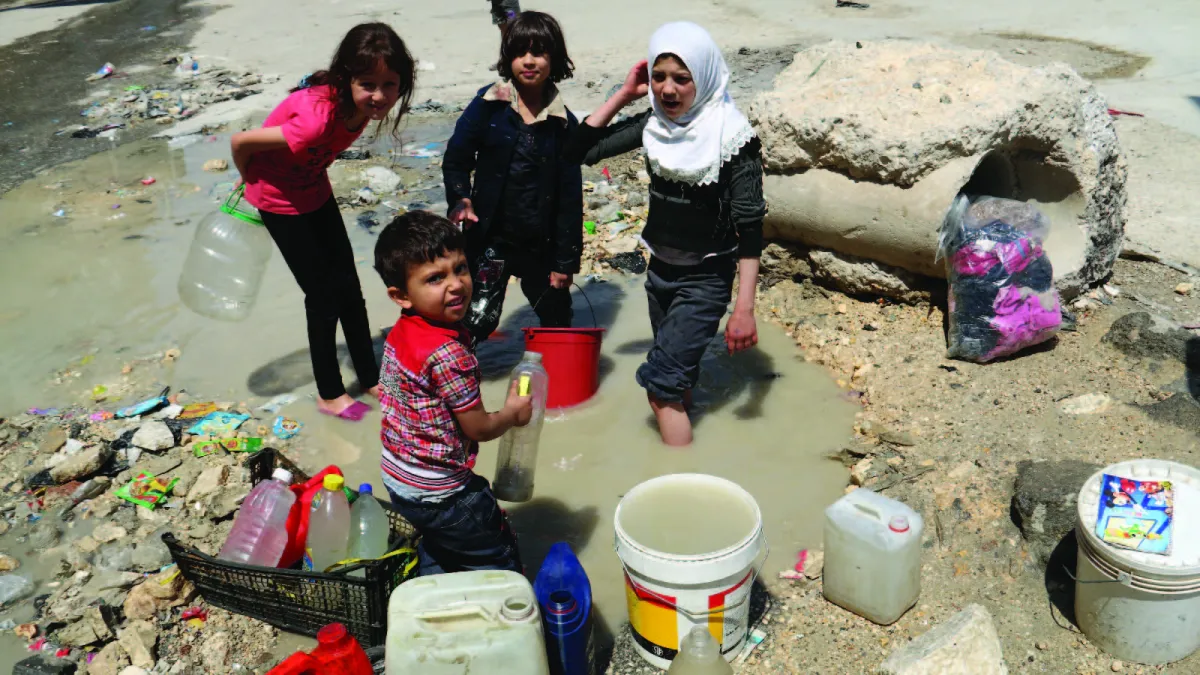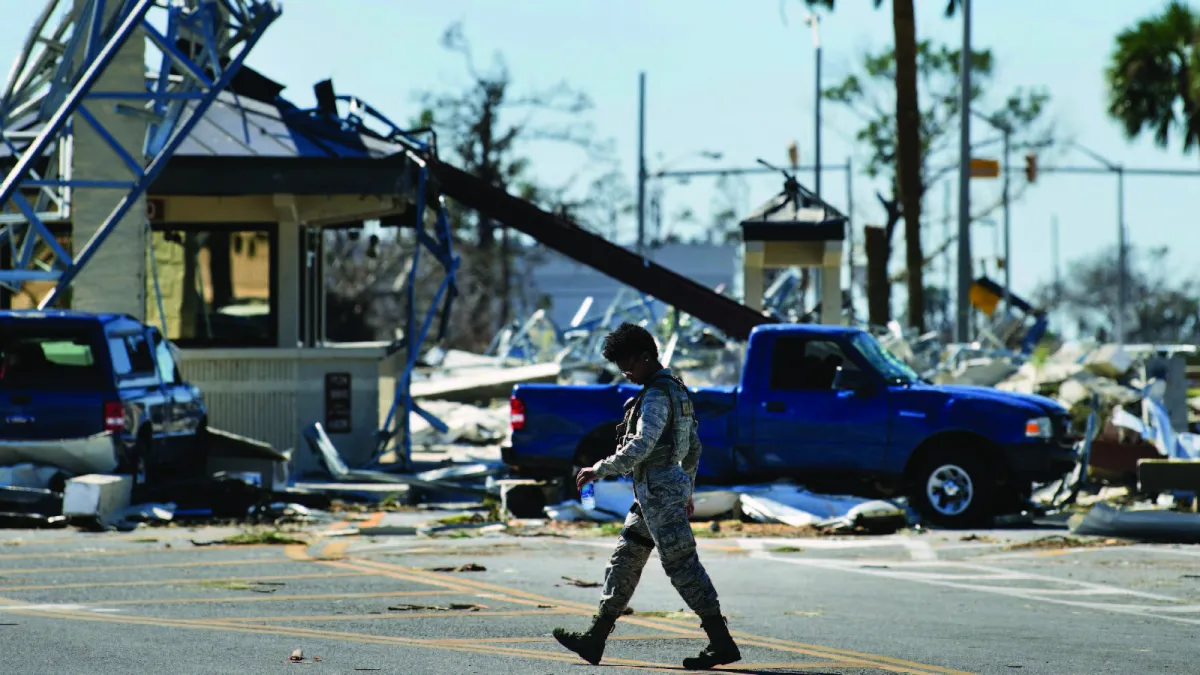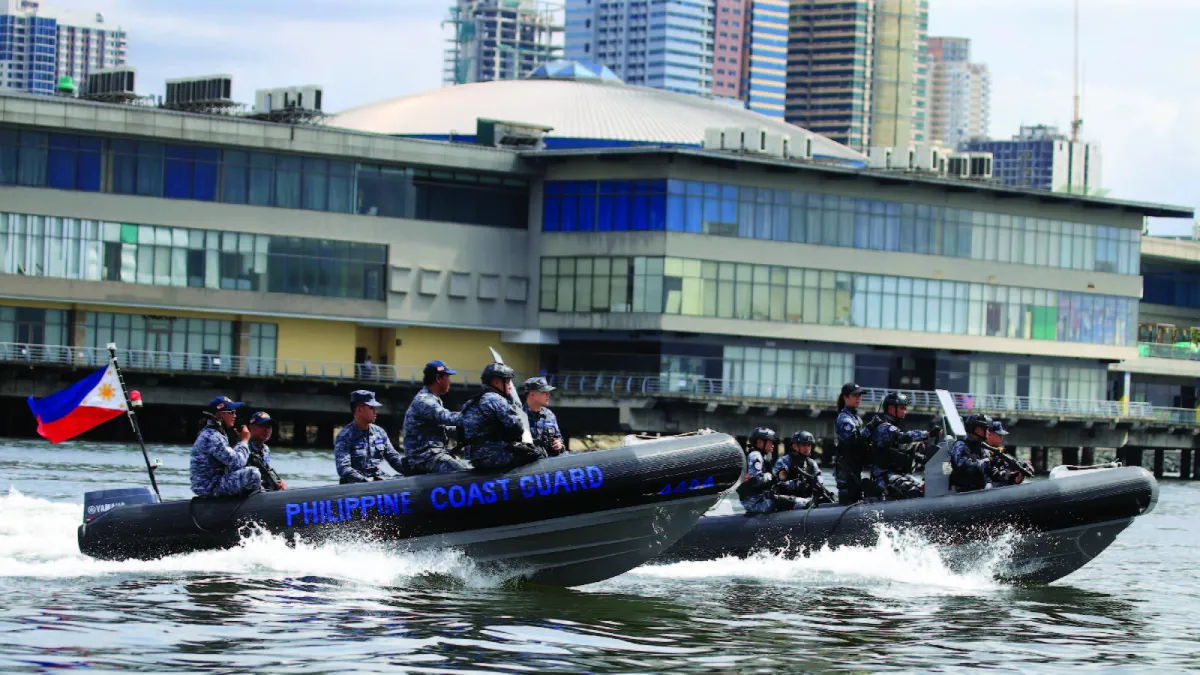How Climate Change Threatens National Security
The effects of global warming are creating various security threats. Governments can take certain measures to adapt to those increasing risks.
Humans often think about climate and the environment as being important for ensuring they have food to eat and healthy air to breathe.
But did you know climate change can also contribute to how safe you are from war, crime, terrorism, and other forms of violence?
In 2015, the U.S. White House National Security Strategy [PDF] said: “Climate change is an urgent and growing threat to our national security, contributing to increased natural disasters, refugee flows, and conflicts over basic resources like food and water.”
That was a major moment. For the first time ever, the United States, home to one of the world’s most powerful militaries, was prioritizing climate-related threats as a major factor in the country’s safety and security.
Why was the National Security Council, a body usually tasked with securing the United States from terrorism, war, and other threats, prioritizing attention to the climate?
The reality is that climate change is an important security issue. It’s a subject on the national defense agenda for many countries today.
How does climate change worsen violence?
The relationship between climate and security is complicated. Experts agree that climate change contributes to increased conflict. But they also agree that this relationship is often indirect and is almost always complex.
In general, climate is known as a threat multiplier when it comes to security.
Sometimes climactic chaos makes existing violence worse. Other times, climate change can influence the various factors that cause violence in the first place. The ways climate and conflict intersect are often intricate. But the good news is that experts are increasingly aware of those connections, which offers them opportunities to craft new solutions.
In 2007, then UN Secretary-General Ban Ki-Moon called a deadly conflict that was unfolding in Darfur in Sudan the “first climate change conflict.” Experts had linked that outbreak of violence to climactic conditions such as drought and desertification, which drove political instability in the country. Darfur was not the only conflict since that time to take on the climate-change label. Today, many unfolding conflicts connect the repercussions of climate change. Although the relationship between warfare and environmental concerns remains difficult to measure, data suggests a definite link. For example, according to the International Committee of the Red Cross, as of 2020, of the twenty-five countries “most vulnerable” to climate change, fourteen are suffering from conflict.
Climate-related factors can contribute to the onset of violence, can make it worse, and can even be themselves exacerbated by conflict. When wars break out, sometimes partly sparked by climate change, military responses can in turn cause more damage to the climate in a vicious cycle. Wars that involve using extensive heavy machinery, advanced weaponry, and other technologies can increase greenhouse gas emissions, destroy and contaminate ecosystems, and cause other harmful outcomes.
For those reasons, climate change is damaging for both national security and environmental sustainability.
Such pathways and relationships are complex. Let’s explore some of the categories and typologies practitioners and researchers use to explore the relationships between climate and security, looking at a few examples.
How does climate change affect conflict?
Climate change can precipitate or worsen conflicts between states (interstate), as well as conflicts inside one country (intrastate).
Within individual countries, climate change increases the likelihood that civil war could break out. For example, research has found that a rise in average temperatures by 1.8°F is linked to a 4.5 percent increase in the incidence of civil war that year. Climate is also linked to making such wars last longer. For instance, some researchers have suggested that the bloody and ongoing civil war in Syria was made worse by climate change. They cite the idea that desertification and reduction in agricultural lands placed great strains on the Syrians, giving increased power to violent actors who controlled access to food and other resources. They argue that severe drought also led young men to move into urban settings seeking work, where they became more vulnerable to recruitment by militant organizations. Still, other scholars dispute the claim and suggest that the connections to climate are not necessarily clear.
Climatic changes have served as a threat multiplier in other contexts too. For example, some studies have found that the stress of climate change–induced water scarcity predicts conflicts, particularly when militant groups gain control over a dwindling supply. Such groups can exacerbate tensions, leveraging people’s need for water to increase their own power.
For example, in the Darfur region of Sudan, water scarcity linked to climate change intensified competition [PDF] between different ethnic groups and communities. That contributed to an outbreak of violence in 2003, which later escalated into a major conflict.
Some experts fear that climate change could worsen already-existing international tensions over resources. In recent years, Egypt and Ethiopia have been locked in a dispute related to a hydroelectric dam in Ethiopia.
Egypt gets nearly all of its fresh water from the Nile. The country fears that the upstream Ethiopian dam could threaten its water supply, particularly during a drought. Although tensions over the dam have not incited violence so far, they have led leaders to warn of the potential for military conflict. Declining water supplies due to global warming could exacerbate the issue, making confrontation more likely.
How does climate change affect crime and terrorism?
Climate change intensifies food and resource scarcity, economic uncertainty, damage to infrastructure, and other concerns linked to a various crimes. These include theft, assault, and violence against women. In the Pakistani city of Karachi, water resources have dwindled in recent years, partly because warming temperatures are drying up water sources that feed the city. Gangs have exploited that scarcity by stealing water from the city’s water mains and selling it back to residents at an inflated rate. Vulnerable populations have suffered from that damaging theft, as they are in turn less able to pay the higher cost for critical water supplies.
Climatic chaos is not only linked to different types of crime but also to rises in terrorism. For example, countries including Cameroon, Chad, Niger, and Nigeria are suffering economic hardships from diminishing resources in Lake Chad. Higher temperatures are causing Lake Chad to shrink, reducing water availability. That means people have been facing water shortages, crop failures, livestock deaths, and more. In turn, the countries have also seen rises [PDF] in terrorist and violent extremist attacks.
In Nigeria, for example, climate change has contributed to environmental stresses that have supported the rise of the extremist group Boko Haram. The group has reportedly exploited resource scarcity connected to climate change, which has helped it recruit new members. Climate-related stressors are also contributing to poor socioeconomic conditions. These can allow Boko Haram and similar extremist groups around the world to thrive.
How does climate change challenge militaries?
Climate change is also putting stress on national security infrastructure. The U.S. Department of Defense, for example, reports that extreme heat, floods, rising sea levels, wildfires, and more frequent and intense storms are harming U.S. military bases and equipment. The U.S. National Intelligence Council has warned that more than thirty U.S. military installations are at risk because of sea-level rise.
Militaries are also being deployed with strained resources in response to natural disasters. Between 2022 and 2024, for example, U.S. troops were stationed domestically to respond to climate-related hazards like wildfires.
Climate change is also connected to other issues such as migration and poverty. Those factors, in turn, contribute to and are shaped by conflict. That is another reason climate change is known as a threat multiplier that concerns national security, health, and other sectors.
What can be done?
Fortunately, efforts are multiplying to make the world more resilient to climate change. Those efforts create a win-win situation: they help build a more secure, sustainable future for both the planet and its people.
The best way to reduce the security threats of climate change is to address potential issues before they arise. Mainly, that means using diplomacy to establish rules for sharing resources, foster cooperation to combat criminal activity, and establish procedures for how to peacefully handle disputes when they arise.
Often, environmental diplomacy happens at the regional level to address specific issues. The Association of Southeast Asian Nations, for instance, has launched a number of initiatives to cooperatively monitor and manage fishing practices and combat illegal activity in the region.
A group of South American countries—Argentina, Brazil, Paraguay, and Uruguay—have signed on to the Guarani Aquifer Agreement. It outlines how to manage the major underwater freshwater source that crosses international boundaries. The countries were not at war with each other over the aquifer, but the agreement could help prevent tensions rising in a warmer and more water-insecure future.
Meanwhile, the UN Security Council has held several debates on the connections between climate and international security. In 2021, Ireland and Niger (nonpermanent members of the Security Council) jointly sponsored a draft resolution. It acknowledged the effects of climate change on security issues and called for greater consideration of climate issues in future Security Council matters. Although the resolution failed due to a Russian veto, it underscored the increasing awareness worldwide of the role climate change plays in security issues.
Some advocates promote another approach that aims to address the connections between climate and security through environmental peace-building. Though the results of that work are limited so far, it involves touting activities and programs that support cooperation between warring parties based on sharing natural resources.
On a broader scale, policymakers can ultimately improve their national security by taking action on climate change. Limiting global warming and finding ways to address its socially destabilizing effects can help prevent conflict and other violence.









